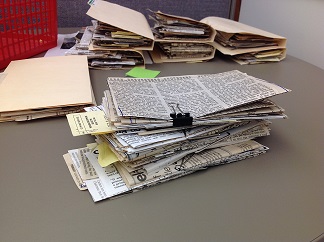
The Minnesota Legislature has passed a presidential preference primary law four times; three were repealed. Four presidential preference primaries have been held: 1916, 1952, 1956, 1992, and soon a fifth will be held: 2020.
1913
Governor Eberhart promoted the presidential primary in his inaugural speech in 1913, and the Legislature passed a law that year, Chapter 449.
1916
The primary was held on March 14 (election results). Winners: Democrat, Woodrow Wilson; Prohibition, William Sulzer; Republican, Albert B. Cummins
Two days before the election, the Duluth News Tribune wrote about the upcoming contest, including "The crazy quilt presidential primary has befuddled everybody from the rummy to the justices of the Supreme Court."
In 1947, former Morning Star Tribune reporter Charles Cheney recalled the primary in "The Story of Minnesota Politics: Highlights of Half a Century of Political Reporting." "Minnesota tried the presidential primary once, in 1916, and that was enough. It was a lot of grief and expense.... The 1917 Legislature repealed the presidential primary freak, and few tears were shed."
1917
The law was repealed, Chapter 133.
1949
A presidential primary was established by Chapter 433, approved April 14.
1952
The primary was held on March 18 (election results). Winners: DFL, Hubert Humphrey; Republican, Harold Stassen
G. Theodore Mitau wrote about the primary in his 1970 version of the textbook Politics in Minnesota. "Stassen had led in the Minnesota Republican presidential primary, and most of the state's convention delegates were officially pledged to him. But a write-in campaign for Dwight D. Eisenhower, launched just a few days before the state primary, had resulted in what came to be called the "Minnesota miracle." With almost none of the advance publicity Stassen had enjoyed, and without the approval of the national Eisenhower organization, the campaign was phenomenally successful; 108,692 voters took the trouble to write in Eisenhower's name on the ballot, while Stassen, whose name was printed thereon, received only 20,000 more votes, 129,076."
1956
The primary was held on March 20 (election results). Winners: Democrat, Estes Kefauver; Republican, Dwight Eisenhower
Minnesota Politics and Government, a 1999 textbook by Daniel Elazar, Virgina Gray and Wyman Spano, explained: "In the 1956 presidential primary the leaders of the DFL tried to deliver the state for Adlai Stevenson by virtually dictating to the rank-and-file DFLers that they vote for him in the name of party unity. The spontaneous reaction of the voters was to give Estes Kefauver the victory, a message pointed toward Hubert Humphrey." See also: "Primary History '56 Free-for-All Contest Had it All," by Jim Parsons, Star Tribune, Jan. 19, 1992.
Entire chapters were devoted to this primary race in Coya Come Home: A Congresswoman's Journey by Gretchen Urnes Beito (Los Angeles: Pomegranate Press, 1990) and Hubert Humphrey: A Biography by Carl Solberg (St. Paul: Borealis Books, 2003).
1959
The presidential primary law was repealed, Chapter 67.
Iric Nathanson wrote about the 1952 and 1956 primaries in a 2008 MinnPost article, "Political Mischief: Minnesota's 1950s Experiment with Presidential Primaries." About the repeal, he wrote, "The mainly Republican conservatives controlled the state Senate, and they moved first to vote repeal with only minimal debate. But repeal was more controversial in the House, where the liberal caucus, composed of DFLers, was in control. There, a repeal vote was delayed when primary supporters, many of whom had backed Kefauver in 1956, pushed unsuccessful to conduct one more direct primary in 1960 before scuttling the 1949 law entirely. But now DFL leaders were concerned that a 1960 primary, which permitted cross-over voting, could embarrass Hubert Humphrey and his bid for the 1960 presidential nomination."
1989
A presidential primary bill, authored by Sen. Ron Dicklich, passed the Senate 48-16, and then the House 117-10, Chapter 291.
1990
Changes were made to the law. The date was pushed back from the last week in February to April 7, and voters were required to declare themselves for a particular party in order to get a ballot. Chapter 603. (Background: "Minnesota Primary Law Aims at Increasing Clout," by Gerald Kopplin, Hibbing Tribune, May 9, 1990)
1991-1992
The House and Senate voted to repeal the presidential primary, but Governor Arne Carlson vetoed the bill. His veto message described his support for a presidential primary. The Senate voted to override the veto, 56-9, but the House failed to override the veto, 77-49. See the veto page for detailed information. The primary remained in place. For background information, read: "The $4 Million Beauty Contest: Primaries and Caucuses 1992: Power to the People, Sort of," Roger Swardson, City Pages, February 26, 1992.
1992
The primary was held on April 7, 1992. Winners: DFL, Bill Clinton; IR, George H. W. Bush (election results). For more details, see: "Primal Yawn: Nation, and Most State Voters, Ignored Controversial Primary," by Dane Smith, Star Tribune, April 9, 1992.
1995
The presidential primary was put on hold until after 1999. More about the hold is described in: "Hopes Dashed for Presidential Primary, Election Overhaul," Jack B. Coffman, Pioneer Press, May 19, 1995).
1999
The presidential primary law was repealed in Chapter 250, Article 1, Section 115.
2016
Minnesota will move from a presidential caucus to a presidential primary for the 2020 election, Chapter 162.
2020
The presidential primary will be held March 3, 2020 on "Super Tuesday." This year, Minnesota will be one of 14 states with a primary on that day.
The Library has additional sources of information on the four Minnesota presidential primaries, including many news clippings on the 1992 primary and discussion of the issue during that decade. Another good source is for this timeline is: Dr. Eric Ostermeier's article for his Smart Politics blog, "A Brief History of Presidential Primaries."